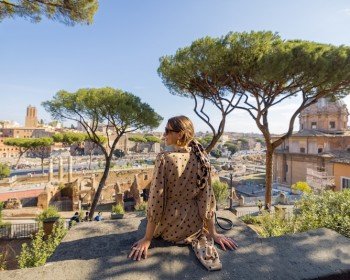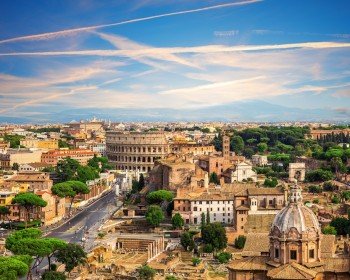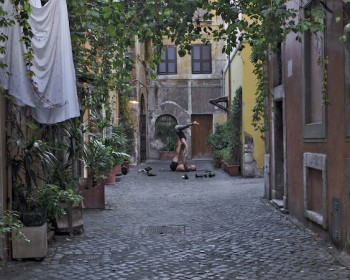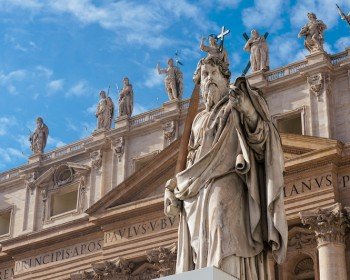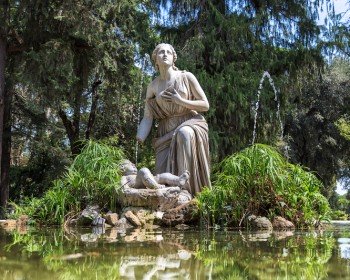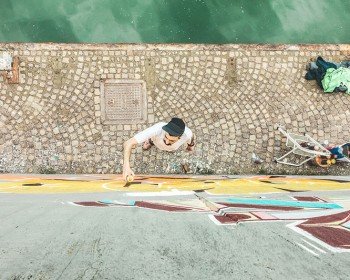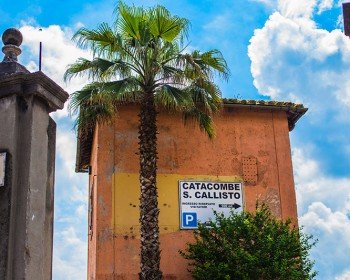What if I told you that Trastevere is the real core of Rome? If you are looking for an almost intact and fascinating area you should not miss rione Trastevere at all! It preserves the typical Roman atmosphere with a maze of tiny streets, made of cobblestones, leading to different squares. Medieval ochre houses and buildings covered in ivy are connected to each other by clotheslines, and you can still see laundry hanging out to dry.
Trastevere is one of the most alive neighborhoods in Rome: enchanting and cozy during the day, at night the district is always full of people, both Italians and foreigners, thanks to the wide variety of places. Restaurants, pubs, and bars offer to everybody the perfect place fitting their needs at best.
History
The name Trastevere derives from the Latin “trans Tiberim”, literally beyond the Tiber: de facto it is placed on the west shore of the Tiber. It is the biggest Roman district and includes the plan on the Tiber’s bight and the Janiculum, one of Rome’s hill.
Formerly an area belonging to Etruscans, even when it became part of Rome, Trastevere remained almost abandoned. During the Republican period, thanks to the vicinity to the river, sailors and fishermen started to settle in the area, together with Jewish and Syrians. The rione has experienced the best changes during the 19th century.
What to see in Trastevere
Walking through the tiny and characteristic alleys in Trastevere, you will feel a unique atmosphere. Below a list of the major highlights.
- Basilica di Santa Maria in Trastevere
This should be the starting point of your tour around Trastevere! One of the oldest Churches in Rome, Santa Maria in Trastevere is a medieval gem located exactly in the square of the same name. The perfect moment to visit the Basilica is at sunset: you will benefit from the perfect light to appreciate the mosaic on the façade. Don’t forget to visit the inside to see its marvelous stuccos and frescoes!
In the middle of the square there is a fountain, work of Donato Bramante, with later additions by Gian Lorenzo Bernini and Carlo Fontana. It is considered the oldest fountain still working in Rome – according to some sources it dates back to the 8th century –.
- Museo di Roma in Trastevere
Established in 1977 in the restored Carmelite convent of Sant’Egidio, it was formerly known as “Museum of folklore and Roman dialect poets”. It is part of the Museo di Roma and hosts both permanent and temporary exhibitions, among these the annual World Press Photo exhibition. The permanent ones are focused on Roman life in the 18th and 19th centuries, including paintings, prints, drawings and watercolors. Furthermore, the museum hosts some manuscripts of Roman dialect poets donated after their death, like Trilussa. If you are passionate about Roman modern culture don’t miss it!
- Janiculum
Though not part of the Seven Hills of Rome, once Roman aristocrats used to build their properties exactly on the Janiculum. The hill also houses the Fontana dell’Acqua Paola, a monumental fountain built to mark the end of the Acqua Paula aqueduct. Furthermore it is the location of the Orto Botanico di Roma, a botanic garden enduring since 1883 and operated by the Sapienza University of Rome. If you are looking for a place where to admire a breathtaking scenic view of the city center, Janiculum is the best destination!
- Trilussa square
Walking over one of Rome’s best bridges, Ponte Sisto – created to connect the core of the city with the other side of the river – you will get to Trilussa square, a place in honor of a Roman dialect poet. At the end of the square there are a few stairs leading to an elegant fountain from the 17th century. Being a meeting place it is always crowdie: both tourists and locals use to sit on those stairs, or just stand everywhere in the piazza, drinking, talking, singing and playing.
- Porta Portese
Dating back to 1945, formerly it was a flea market. Nowadays it is the most famous and popular market in Rome where you can find everything but food. It is held every Sunday in the area of Porta Portese, an ancient city gate located at the end of Via Portuense. Having a stroll around Porta Portese has become a habit both for tourists and Romans.
Discover our ➡️ Private Tour of Trastevere and Jewish district in Rome
How to get there
Just take the underground B line, the blue one, and get off at Coliseum station, then walk for a few minutes, take the tram number 8 and get off at Belli stop. If you find yourself near Termini station just take the H bus and get off at Sonnino-San Gallicano stop. Of course you can just take a taxi!
Peculiarities
The local festival par excellence in Trastevere is “Festa de Noartri”, a popular celebration in honor of Madonna del Carmine. The festival reminds the finding of the Saint’s statue in 1535. On that day – in July – a procession accompanies the statue through the district’s alleys.
If you are more interested in cinema than in religion, you should not miss the "Isola del cinema"!
Set in the Tiberina Island – in the middle of the Tiber – the most suggestive place to enjoy a cinema open-air, it is one of the most important events characterizing the Roman summer.
When in Trastevere don’t miss the chance to have a meal in one of the numerous taverns. Just avoid tourist menus and choose something typically Roman, but forget about being on a diet! The district is full of restaurants, pubs and places where to taste an Italian “aperitivo”. My advice? “Freni e Frizioni”, located near Trilussa square offers a delicious and affordable aperitivo – starting from 7.30pm –.
Have you already been in Trastevere? What did you like the most? Share your experience with us!
More about Trastevere
- 5 Things to do and know about Trastevere


